South Africa is the 2nd largest economy in Africa and one of the African countries which have signed BRI cooperation agreements with China at an early stage. During Chinese President Xi’s visit in September 2018, both countries expressed wishes to strengthen cooperation within the framework of the BRI and the China-Africa Forum to synergize development strategies. [1] In fact, there exist many intersections for China-South Africa complementation and synergy, and South Africa is one of the African countries advocating the synergizing of the BRI in Africa. [2] As the signatory country of the Paris Agreement and an Africa’s economic powerhouse, South Africa has been at the forefront of renewable energy development in Africa.
South Africa is rich in solar and wind energy potential and already has the largest installed renewable energy capacity in Africa (as of 2018) when including hydropower into renewable energy, which accounts for about 57% of renewable energy. However, South Africa overall energy mix is highly dependent on coal and petroleum. And while South Africa boasts strong coal reserves, it has very few petroleum and gas reserves and low production capacity. It therefore requires imports of a large amount of petroleum and gas to meet its domestic demand. Overall, this energy mix results in consistently high levels of CO2 emission. To change this situation, the South African government plans to build up its installed wind and photovoltaic energy capacity to 11442MW an 7958MW respectively. Currently, the cooperation between China and South Africa concentrates in these two energy fields, and Chinese companies invest in renewable energy projects in South Africa through equity financing.
The resources and potential of renewable energy in South Africa
In recent years, South Africa has witnessed rapid development of renewable energy. According to the International Renewable Energy Agency (IRENA), from 2014 to 2018, annual growth of renewable energy installations in South Africa was 22%, which was much higher than the global average growth rate at 8.5% in the same period. Particularly wind power contributed to that increase in renewable energy generation capacity with an average growth of 42%. In addition, solar power generation and hydropower installations in South Africa also experienced strong growth with annual growth of about 28% and 14% respectively (see Table 1).
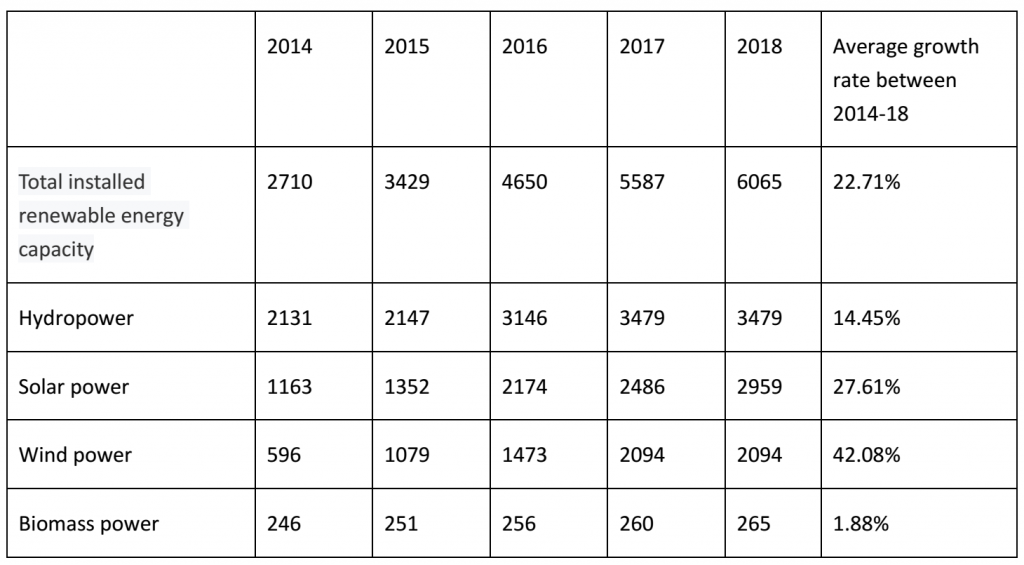
Table 1: South Africa’s installed renewable energy capacity by category, 2014-18 (in MW)
Source:IRENA.
By 2018, South Africa had installed 6,065 MW renewable energy, including 3,479 MW hydropower, accounting for 57 percent of the country’s installed renewable energy capacity. There are 2,959 MW of solar power and 2,094 MW of wind (see Figure 1).[3]

Figure 1: South Africa’s installed capacity of main renewable energy (2014-18)
Source: IRENA
Despite such rapid development, the portion of electricity generated from renewable energy is still relatively low, at about 6%. In 2016, South Africa generated 240.58 tWh electricity, with thermal power accounting for 89%, nuclear power for 5%, large hydropower for 3.6%, and renewable energy (excluding hydropower) for 2.4%. [4]
South Africa has abundant sunshine all the year round. According to various assessments, the average daily sunshine duration in most parts of the country is about 8 to 10 hours, and the annual sunshine duration reaches 2500 hours. The sunshine radiation intensity reaches 4.5-6.6 kWh/m2 per day.
In addition, more than 80% of the land in South Africa has the potential to develop wind power. It is estimated that the potential installed capacity of wind power in South Africa may reach 67,000 GW, close to the potential of solar power generation. Taken all forms of renewable energy together (including hydropower) South Africa could generate more than 250 tWh clean electricity per year. [5]
The development plan and incentive policies on renewable energy in South Africa
Energy supply in South Africa relies on coal. In 2017, coal consumption made up 68% of the country’s primary energy consumption, followed by petroleum (24%).The portion of consumption of renewable energy was lower than 2% (see Figure 2). Excessive reliance on fossil fuels, such as coal, has contributed to high CO2 emission in South Africa, which accounted for about 34 % of Africa’s total CO2 emission in 2017. [6]
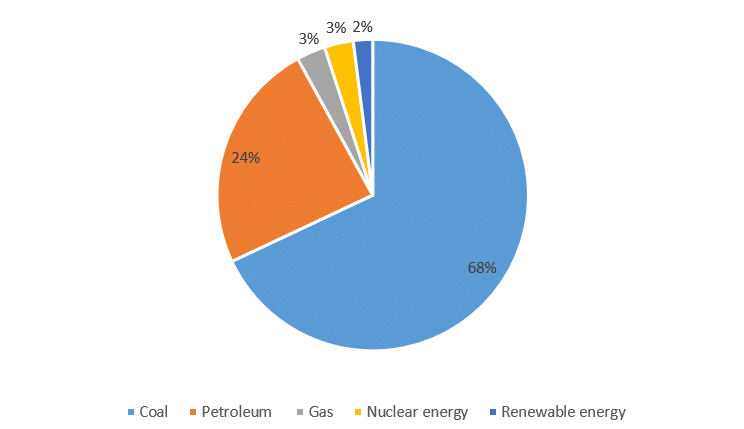
Figure 2: South Africa’s consumption structure of primary energy (2017)
Source: BP Statistical Review of World Energy 2018
South Africa has very few petroleum and gas reserves and low production. To meet domestic demand, South Africa relies on gas and petroleum imports . In 2016, South Africa imported about 4 billion m3 natural gas from Mozambique. [7] It also imports a large amount of crude oil and petroleum products every year from Saudi Arabia, Nigeria, Angola and some other countries to ensure the domestic energy supply (see Figure 3). [8]

Figure 3: South Africa’s import dependence (%) of crude oil and gas condensate (2016)
Source: EIA, South Africa updated 2017-10-26
To minimize dependence on fossil fuels and to optimize the structure of energy consumption and electricity production, the government of South Africa released the White Paper on Renewable Energy Development early in 2003. It aimed at lifting the country’s annual renewable energy electricity production to 10,000 GWh within 10 years, for which many incentive measures were also put forward by the government (see Figure 4). [9]
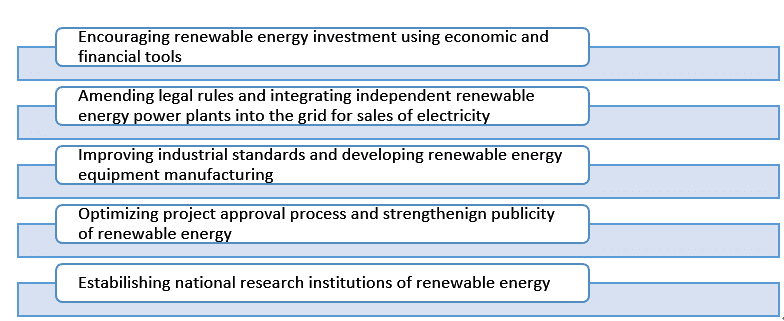
Figure 4: Selected incentive policies in South Africa’s White Paper on Renewable Energy Development
Source: IRENA
In 2011, the Department Of Energy (DoE) of South Africa released the revised Integrated Resource Plan for Electricity (IRP) 2010-2030, which set the goal to increase the domestic installed power-generating capacity of 2011 by 46 GW to 89.532 GW until 2030 and reduce the usage of coal from 93% in 2011 to 46%. Besides, in 2030 the total installed renewable energy capacity in South Africa shall reach 23.6 GW, for which 9200 MW comes from wind power, 8400 MW from photovoltaic power, 4759 MW from hydropower and 1200 MW from solar thermal power.[10] Following that, in 2018 the DoE of South Africa released the revised draft of the Integrated Resource Plan, proposing to improve its installed wind power capacity to 11442 MW in 2030 (accounting for 15% of the total installed capacity), photovoltaic power to 7958 MW (10%), pumped storage power to 2912 MW (4%) and concentrated solar power to 600MW (1%) (see Figure 5). [11]
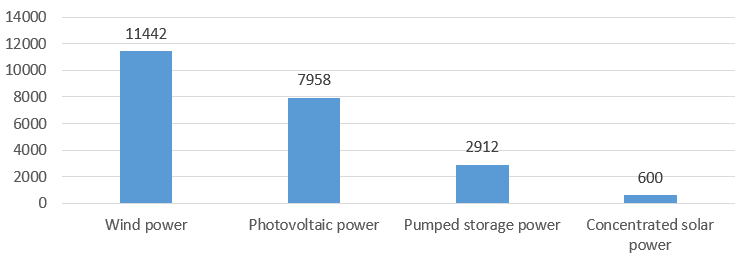
Figure 5: South Africa’s renewable energy installation goal for 2030 (Unit: MW)
Source: IEA. Integrated Resource Plan for Electricity (IRP)
In March 2011, the government of South Africa put forward the “Renewable Energy Independent Power Producer Procurement Programme (REIPPP)” as a replacement of the feed-in tariff subsidy mechanism for renewable energy used since 2009. The REIPPP consists mainly of onshore wind power, solar photovoltaic power, solar thermal power, biomass power and small-scale hydropower and under this program, electricity production companies that win the REIPPP through price bidding would sign a 20-year agreement of renewable energy power procurement with the Grid after meeting the strict requirements on localization rate, ownership and job creation. [12] As of January 2018, there have seen several rounds of tenders under the REIPPP program, involving 6,428 MW installed capacity (3,367 MW onshore wind and 2,372 MW solar photovoltaic) (see Figure 6). [13]
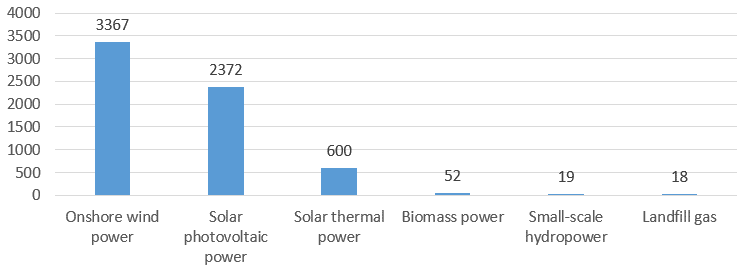
Figure 6: South Africa’s renewable energy tender capacity under the Renewable energy Independent Power Producer Procurement Programme (REIPPP)
Source: NERSA (National Energy Regulator of South Africa)
In April 2018, the DoE of South Africa further signed 27 agreement for REIPPP as well as a power procurement agreement (PPA) with South Africa’s national electric power company Eskom at Phase 3.5 and 4, which were mainly for solar and wind power. Among them, North Cape won 15 wind power, photovoltaic and concentrated solar projects, East Cape won 4 wind power projects, Northwest won 4 photovoltaic projects, West Cape won 2 wind projects, Mpumalanga won 1 biomass project (the first independent power generation business project in the province), and Free State won 1 small-scale hydropower project. The total investment of all these projects reached more than 56 billion ZAR (about 3.58 billion EUR). It is projected that the agreements would add 2,300 MW electricity over the next 5 years. The successful deal this time marked the resumption of long-stalled new energy projects, after South Africa’s state power company has previously prolonged the signature of contracts because of financial difficulties and pressure on the grid. [14]
Main fields and representative projects of China-South Africa renewable energy cooperation
Currently, the renewable energy cooperation between China and South Africa are mainly in the field of wind power and photovoltaic, where Chinese enterprises either provide wind turbines or photovoltaic modules for renewable energy projects in South Africa, participate in wind power projects as general contractor, or invest in renewable energy projects through equity investment.
(1) China-South Africa cooperation on wind power
In April 2015, Goldwind received a procurement order from South Africa’s Golden Valley Wind Power project, which was won by the local company BioTherm Energy. The project is located on the East Cape, with an annual average wind speed of 7.6 m/s and installed capacity of 120 MW. It applies 48 Goldwind 2.5MW (121/2500) permanent magnet direct drive wind power units, making the Goldwind the first supplier of such unit in the country. Alongside with the wind power units, Goldwind also supplies EPC turnkey solution. As such, this becomes the 2nd largest wind power project of Goldwind in Africa, following the Adama Wind Power Project in Ethiopia where the company has supplied 34 power units. [15]
In June 2015, according to the list provided by the DoE, Goldwind once again won another procurement order and EPC contract of the Excelsior Wind Power Project by the BioTherm Energy. The Excelsior project is also located at the East Cape with an annual average wind speed at 7.5 m/s and installed capacity of 32.5 MW. Goldwind is to supply 13 Goldwind 2.5MW (109/2500) permanent magnet direct drive wind power units as well as the EPC turnkey solution.
These two projects, i.e. the Golden Valley-120MW Wind Power EPC Project and the Excelsior-32.5MW Wind Power EPC Project, are included in the aforementioned 27 agreement for the REIPPP and the PPA with Eskom in April 2018 (see Figure 7).
As the general contractor of the project, Goldwind cooperated with the owner company to win the bidding for the REIPPP, which marked the beginning for Chinese wind power equipment manufacturers to enter the South African wind power market. The cooperation has not only broken the traditional export model of mechanical and electrical equipment, but also driven China’s wind power technology, products, services and even relevant standards to enter South African market.
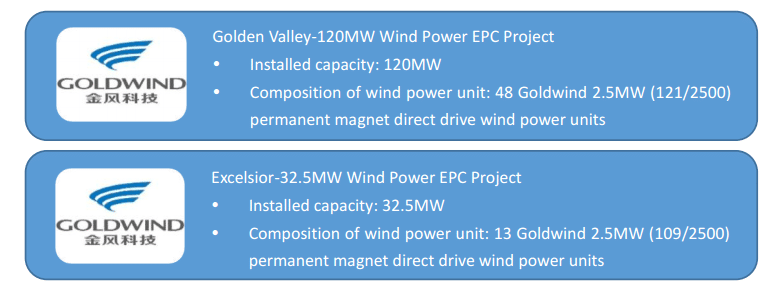
Figure 7: Goldwind’s Wind Power EPC Project in South Africa

Aside from Goldwind’s project, the Chinese company Longyuan Electric Power, a subsidiary of China Guodian Corporation, participated in the South African wind power market as a project developer in the REIPPP program through equity financing. In October 2013, Longyuan won the bid of the Phase Ⅰ and Ⅱ of the De Aar Wind Power Project (see Figure 8) located in North Cape. The total installed capacity amounts to 244.5 MW, in which Phase Ⅰ and Ⅱ takes 100.5 MW and 144 MW respectively. Longyuan invested about 2.5 billion RMB (about 320 million EUR) as the controlling shareholder, and developed jointly with Murillo Renewable Energy of South Africa and a local community. The local banking syndicate provided non-recourse financing. [18]
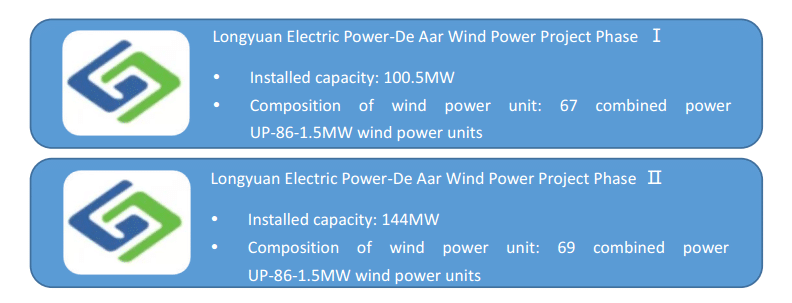
Figure 8: China Longyuan Electric Power’s De Aar Wind Power Project in South Africa
The De Aar Project is the first wind power project of Chinese companies that encompasses investment, construction and operation. It shows that Chinese companies are backed up by Chinese capital and build the fame of “Made in China” in foreign markets. The 163 wind turbines in this project are the 86-1.5MW model developed by the Chinese company United Power, and the wind tower and accessories are provided by the Chinese company Titan Wind. Apart from such large equipment, Longyuan, as the owner of the project, employs local products for general equipment as well as local labor mostly for technology and legal consulting and management, which have created job opportunities for the local and effectively helped conquer the difficulties of adapting the project to the local environment. [19] It was estimated that the project could provide 644 million kWh clean electricity to 85,000 local households per year, save 215,800 tons of standard coal units and reduce CO2 emissions by 619,900 ton (see Figure 9). In June 2018, the De Aar project successfully passed the assessment of South Africa’s Grid. [21]
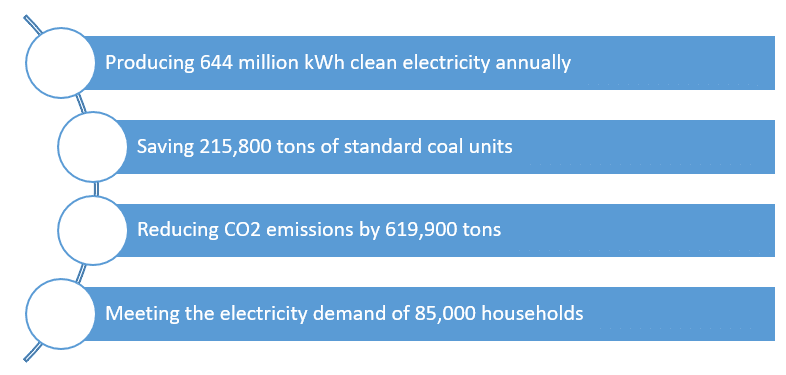
Figure 9: Social and environmental benefits of Phase Ⅰ and Ⅱ of De Aar Wind Power Project by China Longyuan Electric Power
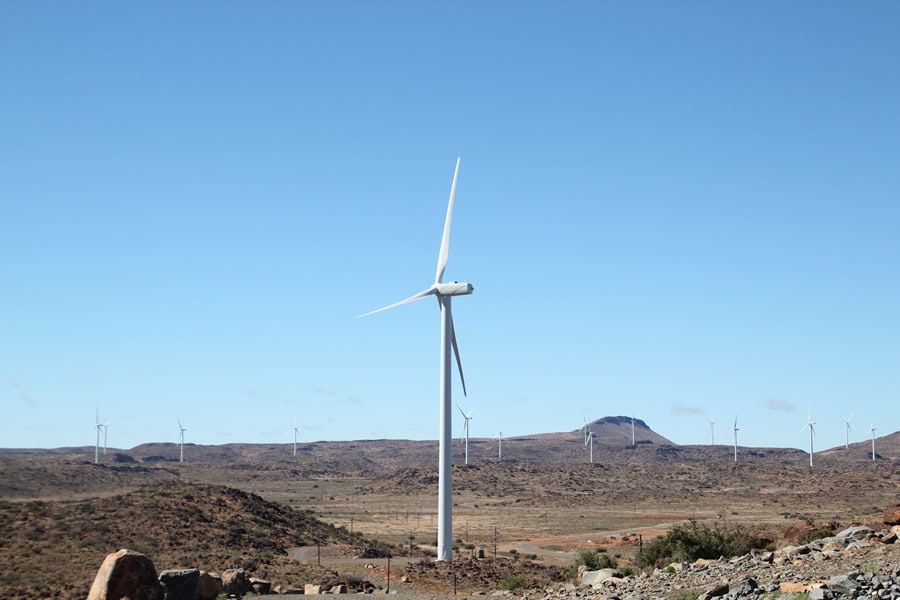
(2) China-South Africa cooperation on solar photovoltaic
In August 2018, a joint venture was formed by the Chinese company ET Solar with Canadian Solar in South Africa to provide EPC service for a solar photovoltaic project of the South African renewable energy developing company BioTherm. Located in the North Cape of South Africa, the project covers a total area of about 387 hectares, and consists of the Aggeneys Project (46 MW) and the Konkoonsies II Project (86 MW), both of which belong to the 4th round of the REIPPP. This EPC project by the joint venture will use more than 400,000 units efficient polycrystalline components from Canadian Solar’s Max Power 1500V series, as well as the single-axis solar tracking system and 34 units of centralized inverters, making it the first large-scale application of Canadian Solar’s Max Power 1500V series in South Africa. The construction of the Aggeneys Project and the Konkoonsies II Project has begun in September 2018, and is expected to become operational in late 2019 and early 2020 respectively. [22]
Push and influence factors of China-South Africa cooperation on renewable energy
Firstly, South Africa’s economic situation affects foreign investment, including investments in renewable energy projects. In recent years, due to the uncertain and weak world economic growth, low international commodity prices and internal uncertainties, South Africa’s economic situation has been relatively instable with a technical recession in Q2 2017 and some structural impediments such as unemployment, poverty and economic inequality. Additionally, South Africa’s African National Congress (ANC) held party leadership elections in December 2017, followed by the country’s presidential election in 2019. Taken together, the weak economic growth, political uncertainties, and poor social security, foreign companies have not been convinced with the profitability of investing in South Africa. To change the situation, the government led by the ANC focused on implementing the national development plan, strengthened support for special economic zones and key industries and launched an one-stop service platform to attract foreign investment.
Secondly, the domestic renewable energy policies in South Africa lack sustainability and stability:. South Africa’s renewable energy policies had been changed multiple times in previous years, and some renewable energy purchase agreements could not be implemented. This brought great risks to Chinese enterprise to invest in renewable energy projects in South Africa.
Thirdly, South Africa electricity infrastructure, including its transmission networks, is partly outdated. Like most African countries, South Africa’s transmission and distribution network fail to enable a large amount of renewable energy generation and grid connection, and the backward power infrastructure has become a bottleneck restricting the development of its renewable energy.
Fourthly, the climate and environmental conditions of some project sites are harsh. For example, ET Solar and Canadian Solar’s 132 MW photovoltaic project is located in a remote desert area. The bad natural conditions, the wide temperature difference throughout the year, the extreme heat and coldness and the poor traffic conditions make for tough technical requirements for the construction of renewable energy projects. [24]
For Chinese companies, competition in South Africa is getting tougher as international companies also see the potential of South Africa’s renewable energy market. For example, in the 3rd round of wind power bidding held by the DoE, Goldwind and Longyuan were in competition with some internationally renowned wind power developers and investors, including France’s EDF, Italy’s ENEL, Portugal’s EDP and Mainstream. [25]
Lastly, the advantages of Chinese enterprises have not been fully explored in the South African market. In April 2015, the People’s Bank of China and the Reserve Bank of South Africa signed a bilateral currency swap agreement of 30 billion RMB /54 billion ZAR (about 3,6 billion EUR). In July of the same year, the Central Bank of China and the Central Bank of South Africa signed a Memorandum of Understanding which authorized the Johannesburg branch of the Bank of China to be the clearing bank for RMB business in South Africa (the first clearing bank for RMB business in Africa). In August 2017, the BRICS New Development Bank has set up an African regional Center in Johannesburg, South Africa, which planned to approve $1.5 billion in loans for energy projects within 18 months, and discuss local currency lending with South Africa to ease the pressure on the debt of the recipient countries due to exchange rate fluctuations. [26] Besides, Chinese main financial institutions such as the Bank of China also established regional headquarters in South Africa. All these events tell that there are still space to explore the advantages of Chinese financial institutions in South Africa that support China-South Africa renewable energy cooperation.
References:
[1] Yidaiyilu.com. Xi Jinping and the President of South Africa: strengthening cooperation within the framework of the BRI and China-Africa Cooperation [EB\OL]. (2018-7-24).https://www.yidaiyilu.gov.cn/xwzx/xgcdt/60977.htm.
[2] Yidaiyilu.com. Chinese ambassador to South Africa: South Africa looks forward to deepening cooperation with China on the “five connectivities” [EB\OL]. (2018-1-2).https://www.yidaiyilu.gov.cn/ghsl/gnzjgd/42004.htm.
[3] IRENA. Renewable Capacity Statistics 2019[R].IRENA, 2019.
[4] The International Trade Administration. South Africa – Electrical Power Systems [EB\OL]. (2017-1).https://www.export.gov/article?id=South-Africa-electrical-power.
[5] Sciencedirect. The rise of Renewable Energy implementation in South Africa [EB\OL]. (2017-12). https://www.sciencedirect.com/science/article/pii/S1876610217365165.
[6] BP. Statistical Review of World Energy 2018 [R]. BP, 2018.
[7] EIA. Country analysis Brief: South Africa, [R].EIA, 2017.
[8] EIA. Country analysis Brief: South Africa, [R].EIA, 2017.
[9] IRENA. White Paper on Renewable Energy and Clean Energy Development. [EB\OL].[2018-11-16].http://www.iea.org/policiesandmeasures/pams/southafrica/name-21947-en.php?s=dHlwZT1yZSZzdGF0dXM9T2s,&return=PG5hdiBpZD0iYnJlYWRjcnVtYiI-PGEgaHJlZj0iLyI-SG9tZTwvYT4gJnJhcXVvOyA8YSBocmVmPSIvcG9saWNpZXNhbmRtZWFzdXJlcy8iPlBvbGljaWVzIGFuZCBNZWFzdXJlczwvYT4gJnJhcXVvOyA8YSBocmVmPSIvcG9saWNpZXNhbmRtZWFzdXJlcy9yZW5ld2FibGVlbmVyZ3kvIj5SZW5ld2FibGUgRW5lcmd5PC9hPjwvbmF2Pg
[10] IEA. Integrated Resource Plan for Electricity (IRP) [EB\OL].[2018-11-16].http://www.iea.org/policiesandmeasures/pams/southafrica/name-24983-en.php?s=dHlwZT1yZSZzdGF0dXM9T2s,&return=PG5hdiBpZD0iYnJlYWRjcnVtYiI-PGEgaHJlZj0iLyI-SG9tZTwvYT4gJnJhcXVvOyA8YSBocmVmPSIvcG9saWNpZXNhbmRtZWFzdXJlcy8iPlBvbGljaWVzIGFuZCBNZWFzdXJlczwvYT4gJnJhcXVvOyA8YSBocmVmPSIvcG9saWNpZXNhbmRtZWFzdXJlcy9yZW5ld2FibGVlbmVyZ3kvIj5SZW5ld2FibGUgRW5lcmd5PC9hPjwvbmF2Pg
[11] Bjx.com.cn. South Africa’s Department of Energy has released a Revised Integrated Resource plan [EB\OL].[2018-8-28].http://www.bjpsb.com/guanfushebei/3421.html.
[12] IEA, Renewable Energy Independent Power Producer Programme (REIPPP) [EB\OL].[2018-11-16].http://www.iea.org/policiesandmeasures/pams/southafrica/name-38785-en.php?s=dHlwZT1yZSZzdGF0dXM9T2s,&return=PG5hdiBpZD0iYnJlYWRjcnVtYiI-PGEgaHJlZj0iLyI-SG9tZTwvYT4gJnJhcXVvOyA8YSBocmVmPSIvcG9saWNpZXNhbmRtZWFzdXJlcy8iPlBvbGljaWVzIGFuZCBNZWFzdXJlczwvYT4gJnJhcXVvOyA8YSBocmVmPSIvcG9saWNpZXNhbmRtZWFzdXJlcy9yZW5ld2FibGVlbmVyZ3kvIj5SZW5ld2FibGUgRW5lcmd5PC9hPjwvbmF2Pg.
[13] NERSA.MONITORING RENEWABLE ENERGY PERFORMANCEOF POWER PLANTS [EB\OL].[2018-11-16].http://www.nersa.org.za/Admin/Document/Editor/file/Electricity/SustainableEnergy/Monitoring%20Report%20Oct2017_No2.pdf.
[14] Bjx.com.cn. South Africa Has Signed 27 New Energy Projects Worth 56 Billion ZAR [EB\OL]. (2018-4-8).http://news.bjx.com.cn/html/20180408/890126.shtml.
[15] Stcn.com. Goldwind Won an Order for 120MW Units in South Africa [EB\OL]. (2015-4-21).http://kuaixun.stcn.com/2015/0421/12189839.shtml.
[16] Stcn.com. Goldwind Won Several Orders in South Africa [EB\OL]. (2015-6-11).http://kuaixun.stcn.com/2015/0611/12298736.shtml.
[17] Bjx.com.cn. South Africa Has Signed 27 New Energy Projects Worth 56 Billion ZAR [EB\OL]. (2018-4-8). http://news.bjx.com.cn/html/20180408/890126.shtml.
[18] Ce.cn. Longyuan Won the Bid for 244,000 KW South African Wind Power Project [EB\OL]. (2013-10-30). http://www.ce.cn/cysc/ny/gdxw/201310/30/t20131030_1687329.shtml.
[19]Longyuan Electric Power. Good Time of the BRI – Longyuan’s Going-Global [EB\OL]. (2017-5-15). http://www.clypg.com.cn/cn/news/ttxw/327300.shtml.
[20] Cpnn.com.cn. National Energy Group is ready to Set Sail [EB\OL]. (2018-1-16).http://www.cpnn.com.cn/zdyw/201801/t20180116_1046010.html.
[21]Bjx.com.cn. United Power’s project passed the assessment by South African Grid [EB\OL]. (2018-6-15).http://news.bjx.com.cn/html/20180615/906255.shtml.
[22] Guangfu.bjx.com.cn. ET Solar with Canadian Solar’s first 132MW Solar Photovoltaic Project is About to Start in South Africa [EB\OL].(2018-8-29).http://guangfu.bjx.com.cn/news/20180829/924323.shtml.
[23] Yidaiyilu.com. Chinese ambassador to South Africa: South Africa looks forward to deepening cooperation with China on the “five connectivities” [EB\OL]. (2018-1-2).https://www.yidaiyilu.gov.cn/ghsl/gnzjgd/42004.htm.
[24] Guangfu.bjx.com.cn. ET Solar with Canadian Solar’s first 132MW Solar Photovoltaic Project is About to Start in South Africa [EB\OL].(2018-8-29).http://guangfu.bjx.com.cn/news/20180829/924323.shtml.
[25] Ce.cn. Longyuan Won the Bid for 244,000 KW South African Wind Power Project [EB\OL]. (2013-10-30). http://www.ce.cn/cysc/ny/gdxw/201310/30/t20131030_1687329.shtml.
[26] Yidaiyilu.com. Chinese ambassador to South Africa: South Africa looks forward to deepening cooperation with China on the “five connectivities” [EB\OL]. (2018-1-2). https://www.yidaiyilu.gov.cn/ghsl/gnzjgd/42004.htm.
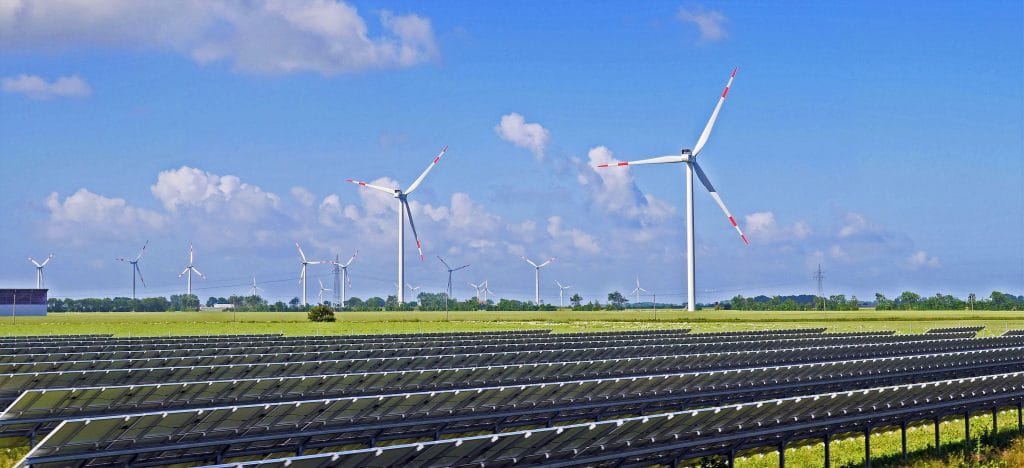




Comments are closed.